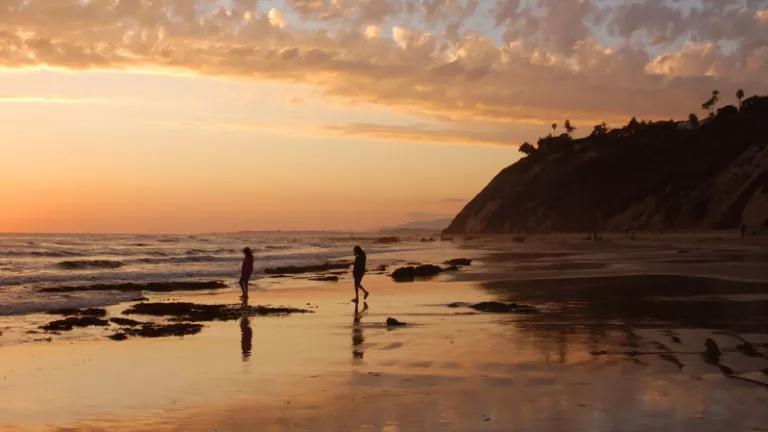
The floods that have inundated parts of Illinois and Missouri are highly unusual, both in terms of their timing and their size and extent.
But they may not be so unusual in the future, due in part to climate change, and because federal agencies who we rely upon to determine the likelihood of floods may be underestimating the true risk on Midwestern rivers -- by a lot!
Studies indicate that the risk of floods are greater than two federal agencies lead us to beleive; FEMA, who produces flood risk maps, and the Army Corps of Engineers, who manages water levels and flood control systems on major rivers and reservoirs.
- A study published in Nature Climate Change by researchers from University of Iowa found that the frequency of floods in Iowa and across the Midwest is on the rise. The study examined data from hundreds of stream monitoring stations throughout the Midwest. One-third of the stations showed floods are occurring more frequently than in the past.
- A paper published in 2008 in Environmental Health Perspectives (Black 2008) determined that the 100-year flood at Hannibal, Missouri as determined by the Army Corps of Engineers should more realistically be defined as the 10-year flood.
- A study from Washington University in St. Louis found that "100-year flood" elevations defined by the Army Corps of Engineers may be as much as 5.5 feet too low at some locations on the Mississippi River.
So when you think it seems like 100-year floods are happening way more frequently than once every one hundred years, it turns out you're right!
And Midwestern floods will become even more bizarro (i.e. potentially bigger or more frequent) as the climate changes. The Midwest is already seeing an upward trend in the amount of annual rainfall we receive. According to the National Climate Assessment, rain will increasingly fall in bigger storms in the winter and spring. Bigger more intense storms are more likely to lead to flooding. Earlier this year, the St. Louis Post-Dispatch did a great article on future flood risks on the MIssissippi that I highly recommend reading.
Climate projections indicate that more precipitation will fall in the winter in the future, and will come down as rain rather than snow, due to warmer temperatures. That could mean a greater likelihood of winter floods, like we're seeing now in the Midwest. It's very rare for major floods to happen in winter in the Middle Mississippi River. I did a quick examination of federal flood disaster declarations and found that only 10.5 percent occur in winter (4.4 percent in December), compared to 45.6 percent in spring and 32.4 percent in the summer (admittedly, flood disaster declarations are not the same thing as floods, but these numbers are representative of major flood events). More winter floods may occur in the future.

Climate Change Makes Flood Risk a Moving Target
We used to think of flood risk as a constant. The risk of flooding in the future was assumed to be about the same as the risk of flooding last year, and the year before that, and the year before that, etc. But that's no longer the case. We know the risk of flooding is on the rise along Midwestern rivers and climate change is subtly loading the dice, increasing the odds of floods even more every year.
Unfortunately, the tools we rely upon to estimate the risk of flooding don't take climate change into account. For example, official flood maps produced by FEMA and relied upon by more than 22,000 communities around the country are based solely on historical data, with no consideration of how flood risk will change in the future. Estimates produced by the Army Corps of Engineers have the same problem.
Despite these flaws, we still rely on those tools to plan where to build schools, bridges, and infrastructure; where it's safe for people to live; and, um, I don't know, decide how high to build a floodwall or levee!
Consequently, we're making decisions about what to build and where to build based on bad information and incomplete science. And we're putting a lot of people in harm's way as a result.
But researchers like Bob Criss aren't all that surprised by the floods now happening on the Mississippi. He recognizes that climate change is loading the dice and that our own interventions, such as walling off big rivers like the Mississippi with levees, have also elevated flood risks. According to Criss, "The big rivers have no place to go so, now they're acting like small rivers," meaning they're flashier and flood more quickly.
The good news is that we're waking up to that reality. This year, President Obama put in place new federal flood protection standards that require federal agencies to consider future climate impacts and use a larger margin of safety for federally funded projects. Some members of Congress (including Senator Roy Blunt of Missouri, a state dealing with serious flooding problems right now) sought to block these standards from going into effect, but Congress finally got out of the way. The new flood protection standards will help steer federally funded projects away from coastlines and away from vulnerable river floodplains. That's a big deal, when one considers the billions of dollars the federal government spends each year to build public infrastructure and facilities.
But states and local communities still make a lot of decisions on their own and each one deals with them in their own way. The floods happening on the Mississippi River will give us a look at how states and communities choose to adapt to a more uncertain future, for better or worse.



